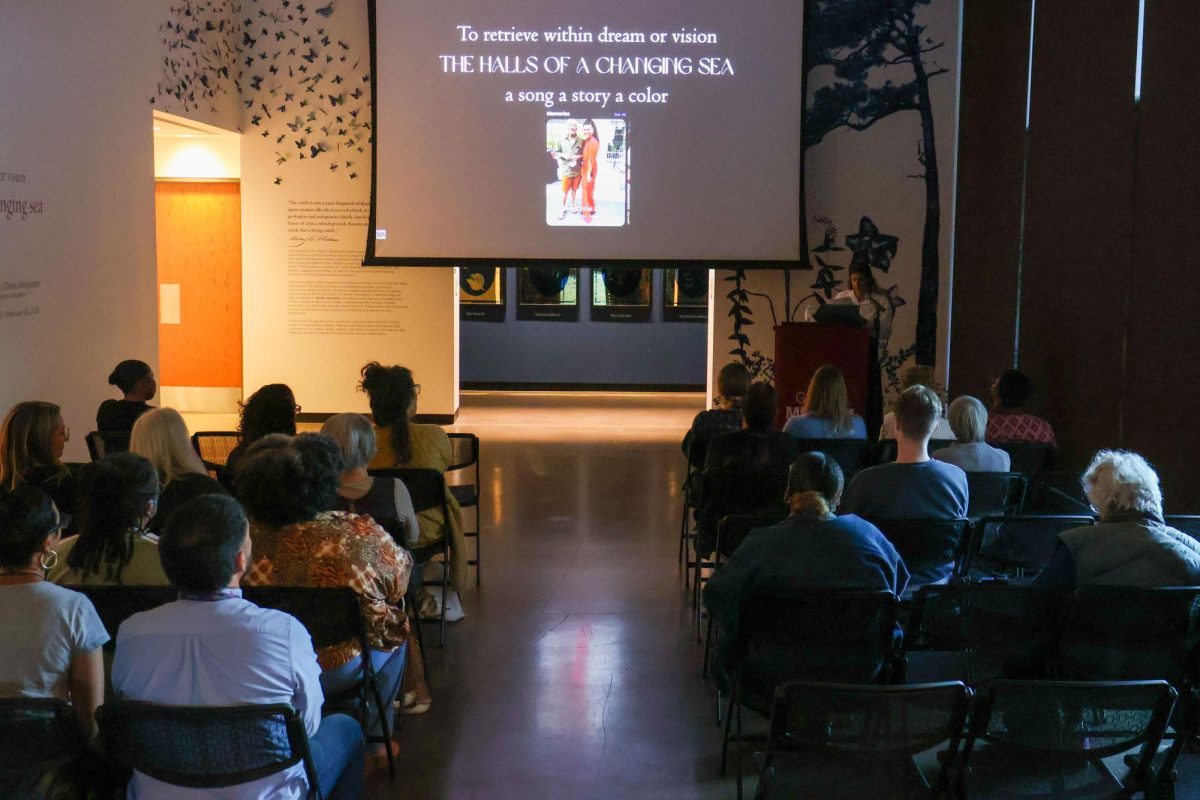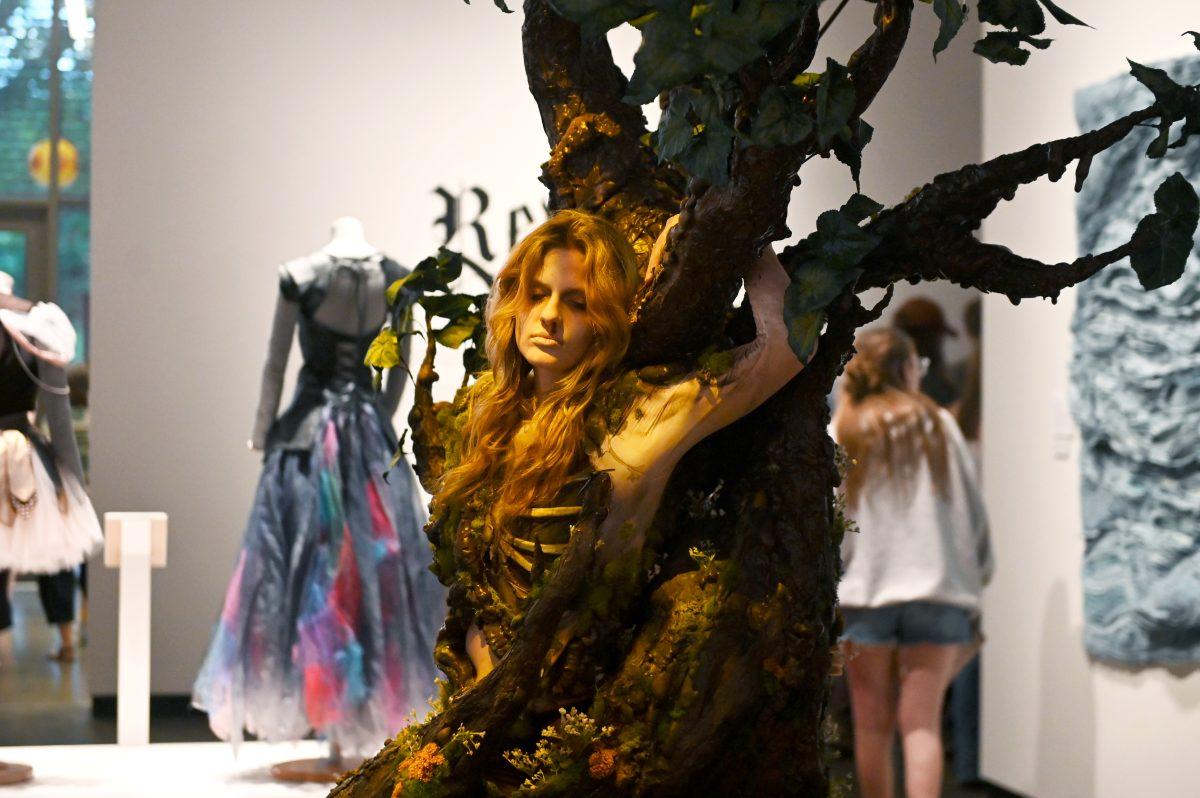The Gregg Museum hosted a talk with artist Claire Alexandre on Oct. 16 to discuss her exhibition “the halls of a changing sea” which features her work connecting personal narratives to racial, gender and environmental justice.
Alexandre is a visual artist who creates murals and portrait paintings. Her work utilizes non-traditional materials such as soil and plastic to create various textures and pigments. She said she feels a commitment to telling the stories of oppressed peoples through depicting a connection to the earth. She particularly focuses on those who are Black, LGBTQ+ and women.
Throughout her talk, Alexandre recounted different projects, past residencies and how she came to understand her mission in connecting sovereignty and justice to ecology and ancestral stories.
Alexandre was born a mixed race woman in the New Mexican desert. Both of her parents were artists, and she described her father as restless and constantly moving. They moved frequently before settling in a small town in the South of France called Turriers, where she grew up among rolling hills.
“It was evident to me, given the immense privilege I’ve had in becoming so acquainted with the land that cradled my childhood, that I would pursue a life dedicated to loving the land back,” Alexandre said.
When she discovered a love for painting just after college, she threw herself into it. She travelled to Brazil, Columbia, Ecuador and Scotland to paint murals. Alexandre said she only returned to the United States because she ran out of money.
Her murals are meant to represent and celebrate community. Each piece is packed with symbols and faces, each researched and arranged to make beautiful compositions including native plants or historic architecture.
“I really think that [murals] are an opportunity to let me reclaim spaces for the voices of people that have been silenced repeatedly, over and over again. And it’s a really participatory practice for me,” Alexandre said.
She soon discovered the symbolism and spiritual meaning derived from creating art with environmental materials. She painted herself using earth from New Mexican deserts, then created portraits of her mentors using samples they collected from their own significant places. Alexandre said she found the process of creating and learning about the pigments extremely profound.
“I just find it so meaningful to be able to create portraits with soil from places that I know are connected to both of them, to their ancestors, to places they’ve lived, schools and ancestral burial grounds. It just holds a lot of power,” Alexandre said.
When she was asked by Museum Director Sara Segerlin to create an exhibit, her father had recently passed and her artistic career had accelerated faster than expected. Amid a chaotic time, Segerlin helped her draw from her past and current work to create “the halls of a changing sea,” which is named after a poem by her late father, Phillipe Alexandre.
Through utilizing art as a way to communicate grief and joy, it has served as a means for connection in many ways for Alexandre. Later in her father’s life, the two were able to bond through arts and crafts. They would create candles and perfumes together at his home in North Carolina.
“This process of being able to make things with our hands, I just feel really grateful for that. It did eventually lead to my father being able to have conversations where we talked about some harder things. Not everything, but some harder things,” Alexandre said. “The last year that he was alive, I would consider us friends.”
Alexandre’s work is often a representation of her multiple intersecting identities, whether it be queerness, race or womanhood. When painting murals, she makes sure the pieces accurately represent the people and the community they are for.
When creating her most recent piece in Morganton, North Carolina, Alexandre spoke to community members about what they wanted to be featured. They decided to center influential women in activism and business, and the dual roles they play as innovators and nurturers.
The daughter of activist Nettie McGimpsey McIntosh, who is featured in the mural, spoke to Alexandre about her mother’s influence in the community. Alexandre said she finds personal stories extremely impactful and foundational to her creations, and forming trust with the community is important for her as an artist and person.
“It’s not necessarily anything that you can see physically in the mural. Sometimes it ends up being represented in small things, but it really impacts me as a part of this process of painting these things,” Alexandre said. “It changes everything about the piece.”
Alexandre’s exhibit “the halls of a changing sea” is being exhibited at the Gregg Museum until Feb. 28, 2026 in the Woodson Gallery.







